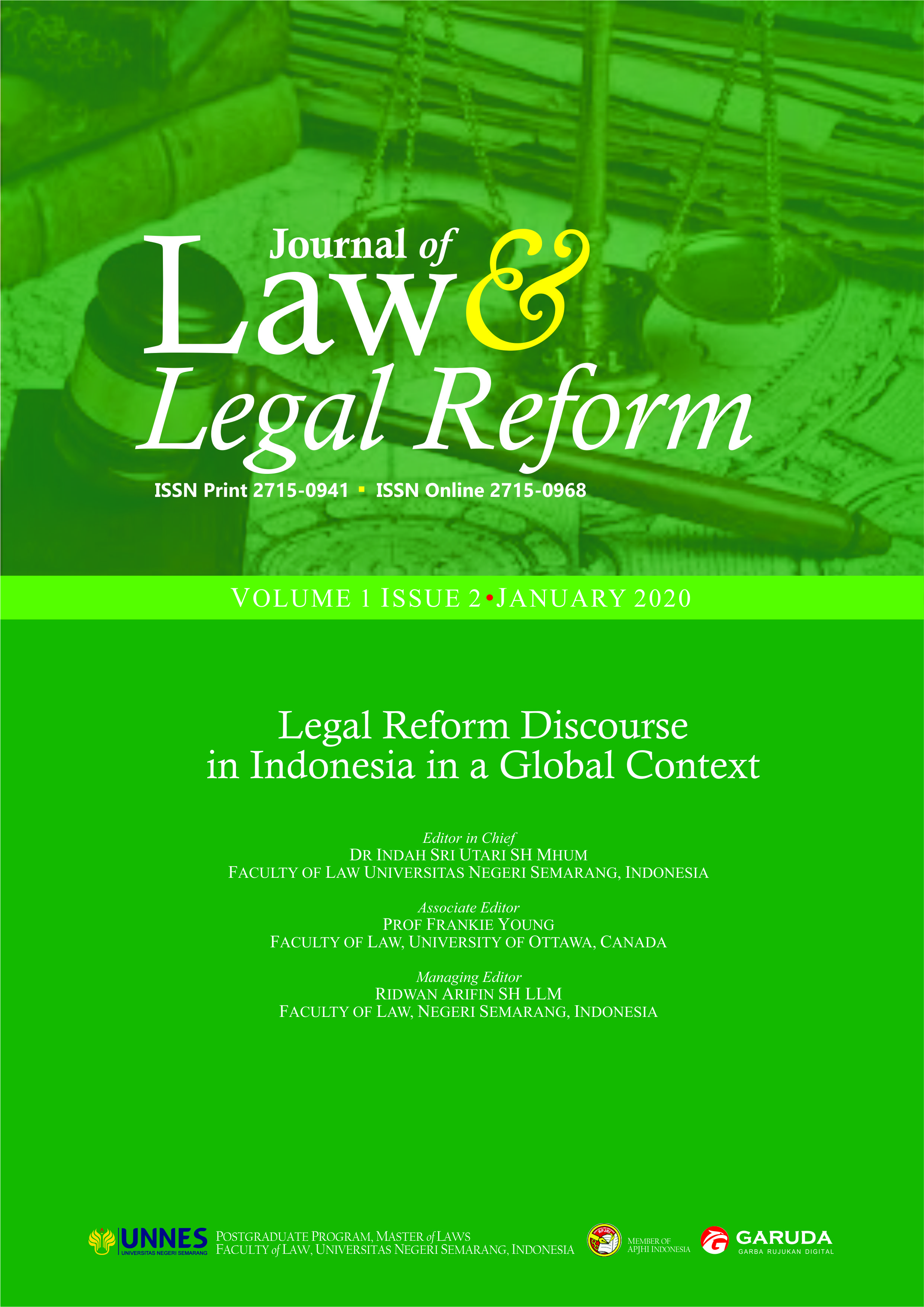How Government Provide Legal Protection for Trade Secrets? Study of PT Choice Plus Makmur Semarang Regency Indonesia
Main Article Content
Abstract
Trade secret is a factor in the creation of innovation for a company to maintain its presence in the community. PT. CPM must identify information that is considered confidential trade before making attempts of legal protection of such information, because not all corporate information can be regarded as a trade secret. The identification is done by providing criteria for confidential information such as information that is not known by the public, has economic value, giving a loss if the information leaked and stolen. So PT. CPM has two attempts of legal protection of trade secrets. First, preventively is to have rules and regulations and written agreements between the parties relating to trade secret information PT. CPM. Second, repressive of protecting end to the measures for violations occurred. In case of violation, PT. CPM will solve the problem amicably. If it fails, then the next action to decide the employment of actors and reported to the authorities. Companies better make a written agreement between the parties in advance and posted to the Directorate General of Intellectual Property Rights in order to ensure the protection of the company's trade secrets.
Article Details
All writings published in this journal are personal views of the authors and do not represent the views of this journal and the author's affiliated institutions. Author(s) retain copyrights under a Creative Commons Attribution-NonCommercial-ShareAlike 4.0 International (CC BY-NC-SA 4.0).
References
Arifin, R. (2019). Indonesian Political Economic Policy and Economic Rights: An Analysis of Human Rights in the International Economic Law. Journal of Private and Commercial Law, 3(1), 38-49. https://doi.org/10.15294/jpcl.v3i1.18178
Choice Plus Energy, online, http://choiceplusenergy.com/, accessed on 20 October 2019.
Hadjon, P.M. (1987_. Perlindungan Hukum Bagi Rakyat Indonesia. Surabaya: Bina Ilmu.
Indonesian Civil Code, Kitab Undang-Undang Hukum Perdata
Law Number 30 of 2000 concerning Trade Secrets, Undang-Undang Nomor 30 Tahun 2000 Tentang Rahasia Dagang
Law Number 8 of 1997 concerning Company Documents, Undang-Undang Nomor 8 Tahun 1997 Tentang Dokumen Perusahaan
Miles, M.N., &. Huberman, A.M. (1992). Analisis Data Kualitatif. translator Tjetjep Rohendi Rohidin. Jakarta: UI Press.
Muhammad, A. (2010). Hukum Perusahaan Indonesia. Bandung: PT Citra Aditya Bakti.
Pratiwi, A. N. M. A. D. (2014). Perlindungan Rahasia Dagang Setelah Berakhirnya Perjanjian Kerja. Thesis. Yogyakarta: Universitas Atma Jaya Yogyakarta.
Ramli, A.M. (2000). H.A.K.I: Teori Dasar Perlindungan Rahasia Dagang. Bandung: Mandar Maju.
Ramli, A.M. (2001). Perlindungan Rahasia Dagang dalam UU No. 30/2000 dan Perbandingannya Dengan Beberapa Negara. Bandung: Mandar Maju.
Soekanto, S., & Mamudji, S. (2013). Penelitian Hukum Normatif Suatu Tinjauan Singkat. Jakarta: RajaGrafindo Persada.
Sukarni, S. (2004). Rahasia Dagang Sebagai Asset Bisnis Di Era Globalisasi. Jurnal Hukum, 14(1), 253-268.
Susanti, F. (2019). The Legal Efforts to Maintain the Authenticity of Trade Secrets through a License Agreement. Journal of Private and Commercial Law, 3(2), 71-75. DOI: https://doi.org/10.15294/jpcl.v3i2.19746
Waspiah, W. (2009). Perlindungan Hukum Melalui Pendaftaran Paten Sederhana Pada Inovasi Teknologi Tepat Guna Studi Kasus Di Kabupaten Tegal. Thesis. Semarang: Universitas Diponegoro.
Waspiah, W. (2017). Model Percepatan Komersialisasi Paten Sederhana pada Dunia Industri. Pandecta: Research Law Journal, 12(2), 183-202.
Waspiah, W., Latifiani, D., & Setiawan, A. (2015). The Mechanism Model of The Simplepatent Registration (A Case Study in the Environmental Small Industries Semarang). South East Asia Journal of Contemporary Business, Economics and Law, 6(4), 20-27.
